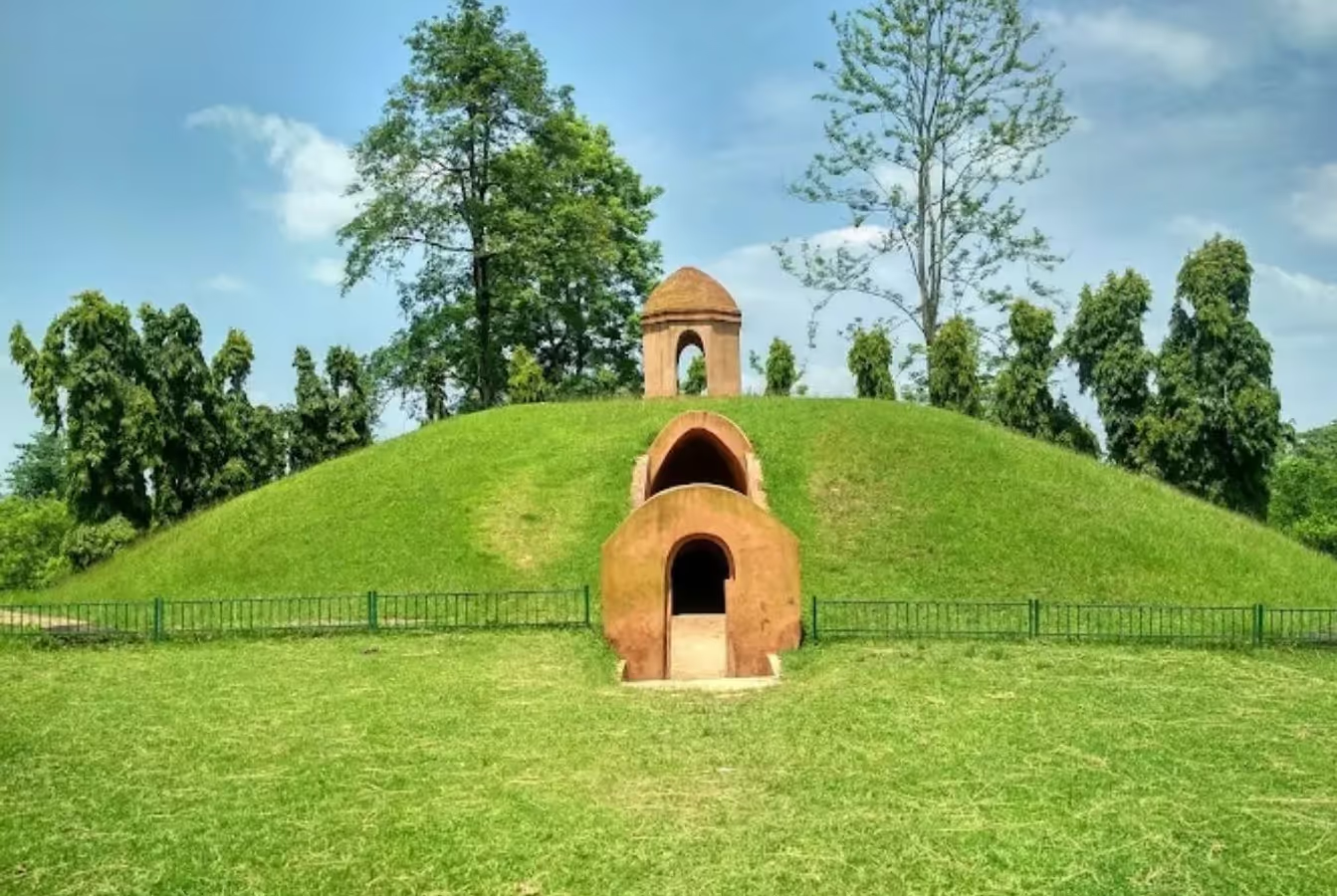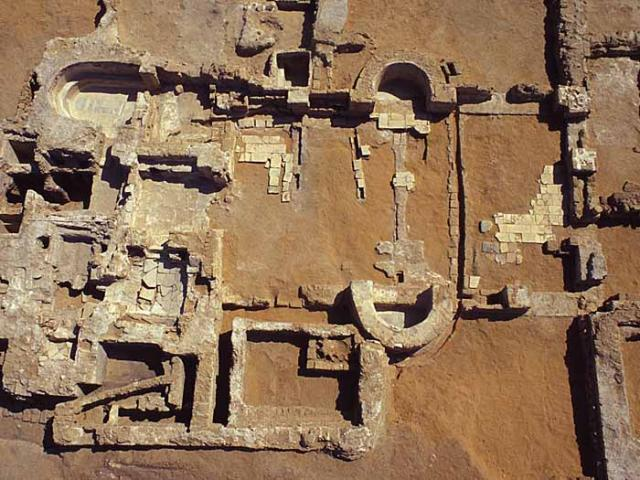Tell Umm Amer and Assam’s Charaideo Moidams Recognised by UNESCO | 29 Jul 2024
For Prelims: Assam’s Charaideo Moidams, World Heritage Committee, UNESCO World Heritage Sites list, Gaza
For Mains: Indian Heritage Sites, Conservation of Archaeological Sites
Why in News?
Recently, the World Heritage Committee included Tell Umm Amer, also known as the Monastery of Saint Hilarion, in the United Nations Educational, Scientific and Cultural Organization’s (UNESCO) World Heritage Sites list, and the List of World Heritage in Danger.
- Additionally, Assam’s Charaideo Moidams was added to the UNESCO World Heritage Sites list, marking India’s 43rd World Heritage Site.
What are the Key Facts About Tell Umm Amer?
- Historical Background: Tell Umm Amer, located in the Gaza Strip, is an ancient Christian monastery dating back to the fourth century CE. Founded by Hilarion the Great (291-371 CE), it is recognised as one of the earliest and largest monastic communities in the Middle East.
- Archaeological Importance: The site contains extensive ruins including five successive churches, bath and sanctuary complexes, geometric mosaics, and an expansive crypt. It is considered a hub of religious, cultural, and economic activity from its time until the Umayyad period (661–750).
- Recent Damage: The ongoing conflict in Gaza has caused significant damage to cultural sites, including Tell Umm Amer.
- The World Heritage Committee's decision to include it in the World Heritage List and the List of World Heritage in Danger underscores the urgency of preserving this historical monument amidst the conflict.
- World Heritage Status Affect on Tell Umm Amer:
- Being listed on the World Heritage List brings international recognition and protection duties. If a site is designated as "in danger," it can receive increased international technical and financial support for preservation efforts.
- In December 2023, UNESCO granted Tell Umm Amer provisional enhanced protection under the 1954 Hague Convention, providing the highest level of immunity from intentional damage during armed conflict.
Note:
- The List of World Heritage in Danger informs the international community about threats to the characteristics of a property on the World Heritage List and aims to encourage corrective action.
- It includes sites facing dangers such as armed conflict, natural disasters, pollution, poaching, urbanisation, and tourist development.
- The inscription on the list can be due to imminent threats or potential negative effects on the property's World Heritage values.
- During its 43rd session in Baku in 2019, the World Heritage Committee emphasised that listing a property as World Heritage in Danger aims to gather global support to help the State Party address the challenges faced by the property.
- This involves working with the World Heritage Centre and Advisory Bodies to develop a plan of corrective measures to achieve the desired state of conservation for the property.
What are the Key Facts About Assam’s Charaideo Moidams?
- The Charaideo Moidams in Assam hold historical significance as the burial sites of the Ahom dynasty, established in 1253 AD by King Sukaphaa.
- These earthen mounds, known as moidams, were used for burying royalty and aristocracy, reflecting the unique funerary practices of the Ahom people.
- The moidams, resembling ancient Egyptians give Charaideo moidams the nickname "Pyramids of Assam '' are now popular tourist attractions, but many are in disrepair.
- The Ahoms, who ruled Assam for six centuries, practised burial instead of cremation, and the grandeur of the moidams often reflected the status of the buried individuals.
- Chaolung Sukapha migrated from Burma to the Brahmaputra valley, establishing the first principality in Charaideo. The Ahoms suppressed the older political system, and adopted Hinduism and the Assamese language while maintaining their traditional beliefs.
- Sukapha successfully assimilated different communities and tribes, earning the title of the architect of 'Bor Asom' or 'Greater Assam'.
- The Ahom dynasty's legacy continues to be celebrated in Assam, notably through events like the 400th birth anniversary of Ahom general Lachit Borphukan. Assam celebrates ‘Asom Divas’ on 2nd December every year to commemorate Sukapha and his rule.

Read more: Assam's Moidams to be Considered for World Heritage List
|
Drishti Mains Question: Q. Discuss the significance of UNESCO World Heritage Sites in preserving cultural heritage, with specific reference to the recent inclusion of Tell Umm Amer and Charaideo Moidams. |

